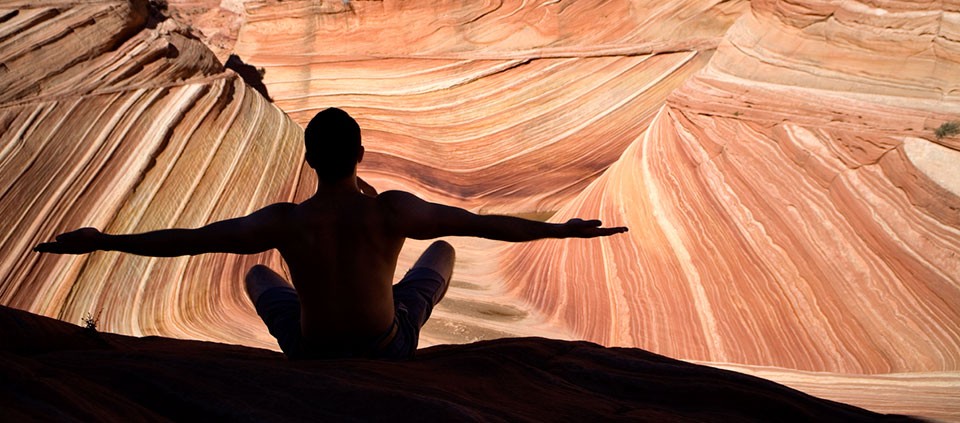Native American Bodywork Practices

All peoples have methods for hands-on therapy, what we now call bodywork. The Cherokee people of North America, for example, were well versed in body therapies and energy healing. They developed a comprehensive, sophisticated bodywork system that encompassed a form of osteopathic massage and manipulation, breath, and energy work. Central to this technique are the alternation of deep pressure and gentle rocking release. The breath was also used to reanimate the body and “draw spirit” into affected tissues. They also used crystal scanning and healing as well as the channeling of spirits and energy medicine.
The Cherokee were also familiar with acupuncture meridians and used acupuncture, with needles made of thorns or porcupine quills, in healing. A nineteenth-century monograph, the Swimmer manuscript in the Smithsonian Institute, speaks to the use of acupuncture by the “primitive savages, when every civilized person would know that the proper treatment is bleeding with leeches.”
In his book on Native American medicine, Ken Cohen, who worked with a Cherokee mentor, noted, “Massage, healing touch, and noncontact healing are practiced by Native healers throughout North and South America. Often the hands are used to sweep away or remove spiritual intrusions or to brush in healing powers. Cherokees warm their hands over coals and circle their palms either on or above an affected area. Some healers hold their hands to the front and back of an affected area, creating what they now call ‘electrodes within the body.’ The healer imagines that electricity is moving from one hand to the other. Sometimes the muscles are rubbed in a manner similar to Western massage. To increase the healing effect, the medicine person massages specific therapeutic points.”
A Variety of Bodywork Traditions
Other bodywork practices are found throughout Native American cultures. The Zuni pueblo in New Mexico practice a technique very similar to the high-velocity adjustment of the neck and spine popularized as chiropractic. Dene and Cherokee bone setters have all but disappeared, but accounts from the nineteenth century support the belief that most felt it was safer to go to a Dene bone setter than to a conventional physician of that era. (The Dene people live in Northern New Mexico and Arizona and are often called Navajo, though that is not a term they use.)
The Hopi people and their practices were the source of inspiration for a type of massage now called Hakomi. Native American practices, in which hot and cold stones are used to deeply penetrate muscles and tissues to reduce pain and inflammation are what we now know as stone massage. All of these practices integrate physical, emotional, psychological, and spiritual aspects of a person.
Discussion exists among Native American scholars as to whether A.J. Still, the father of American osteopathic medicine, who was also the physician for the Shawnee Nation for more than 20 years, lifted much of what became osteopathic medicine or chiropractic from Shawnee healing practices. The Shawnee were originally native to northern Kentucky and southern Ohio and were neighbors to the Cherokee, with whom they share many similarities in bodywork practices. According to this theory, Still took the techniques of Shawnee bodywork and rendered them mechanical as fitted the European paradigm of the day (Shawnee concepts were decidedly more energetic and spiritual). He marketed these techniques and developed the first colleges of osteopathy in the United States.
Hawai’ian Lomilomi
Native Hawai’ians have kept the lomilomi tradition alive with the help of eager tourists. Lomilomi is a sacred hands-on form of transformational bodywork based in ancient traditions of Polynesian influence found throughout the islands of the Pacific. Deeply spiritual in nature, it was passed down from generation to generation and practiced by the kahunas, the shamans or healers, to align a person’s physical, emotional, and spiritual bodies, renewing the mind-body connection and facilitating the body’s innate ability to heal.
Hawai’ian-born nurse, Margaret Machado, formalized the technique. The strokes used are similar to Japan’s shiatsu technique and are often deeper than Swedish massage, the type most Americans are familiar with. Pressure with fingers at certain points is also part of the technique, but it is of shorter duration than most acupressure. Two identifying techniques of authentic lomilomi are the emphasis on spirit/body connection and the use of forearm and elbow as a massage tool.
Recognizing Native Practices
Unfortunately, little has been done to recognize Native healing practices, although some states have acknowledged the touch therapies provided by traditional healers. For example, the state of Alabama has stated, “Native American healers practicing traditional healing practices are exempt from compliance with the Act [Massage Therapy Act] and these rules and regulations, provided they do not represent or advertise themselves as massage therapists.”
Personally, I had the opportunity to learn Cherokee bodywork techniques from two older women who practiced it, and I am committed to making sure that it does not disappear. I teach this approach because I wish to continue to restore the strength and the resilience of the Cherokee approach to touch therapies that has characterized Cherokee medicine for centuries.
© Kripalu Center for Yoga & Health. All rights reserved. To request permission to reprint, please e-mail editor@kripalu.org.
Lewis Mehl-Madrona, MD, a graduate of Stanford University School of Medicine, trained in family medicine, psychiatry, and clinical psychology. He is of Cherokee and Lakota heritage.
Full Bio and Programs